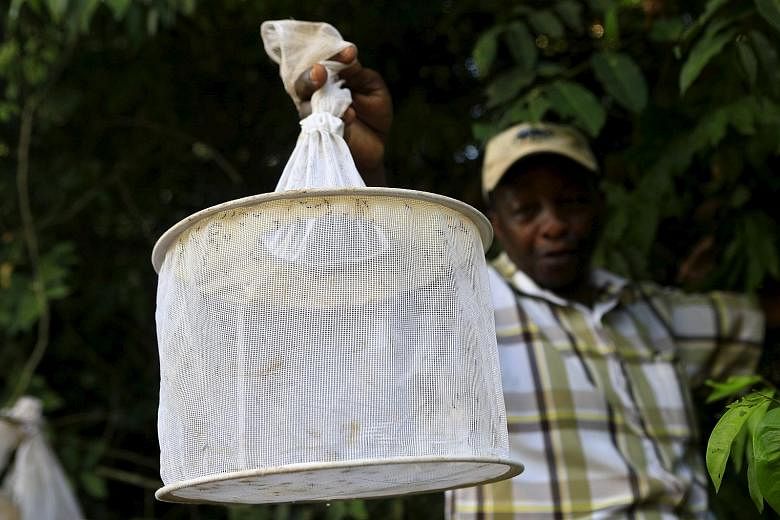NEW YORK • The Zika virus spreading througouth the western hemisphere probably arrived in the Americas in a single traveller in the second half of 2013 - almost a year earlier than previous estimates - according to a new study of the virus' genome led by Brazilian and British researchers.
Experts were divided in their opinions of the new study, published on Thursday in the journal Science. Some praised the work, while others said it was too limited to draw such a specific conclusion.
By counting mutations in the viral genomes in different blood samples over time, the scientists created a "molecular clock" that estimates how fast the virus mutated.
They then compared new samples with earlier ones from Asia, where the Zika virus had been circulating for decades, and from the South Pacific, where it began circulating in 2007. They calculated that the Zika virus arrived in the Americas between May and December 2013. They also concluded that it probably arrived in Brazil first.
The virus was not positively identified in Brazil until May last year. But by then, it had clearly been circulating in the country's north-east for many months, because cities there were experiencing large outbreaks of a mysterious disease causing rash, fever and bloodshot eyes.
The virus did not become headline news around the world until last December, when health officials in Brazil, alarmed over a surge in infants born with tiny heads, warned women not to become pregnant.
The World Health Organisation (WHO) declared a global health emergency on Feb 1.
The new study relies on just 23 viral genomes. They comprise samples of Zika virus obtained in Thailand, French Polynesia and the Cook Islands, as well as 20 in the Americas, including nine from Brazil, with the rest from Colombia, Martinique, Haiti, Guatemala, Suriname and Puerto Rico.
The Haitian virus was noted as being particularly unusual because it was collected in December 2014 - more than a year before the virus' presence in Haiti was confirmed by the WHO last January. The gene sequences from the Americas were all closely related, and most resembled one collected in French Polynesia in November 2013. A large Zika outbreak in French Polynesia began in 2013 and spread to New Caledonia, the Cook Islands and Easter Island.
NEW YORK TIMES

